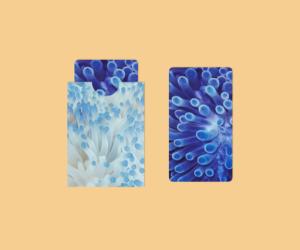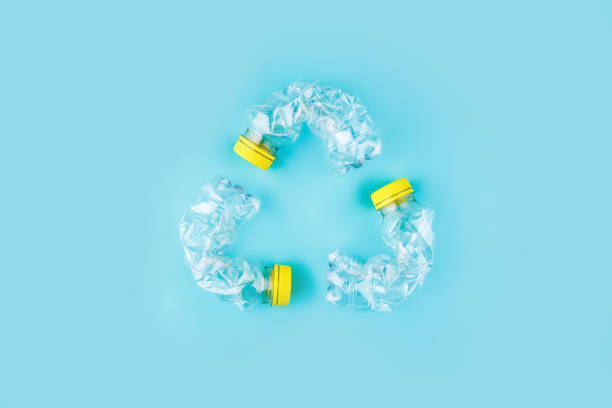

Simple tips to help your products be greener for longer
Fighting climate change and being eco-friendly is front of mind for many of us now, especially with COP26 happening in Glasgow, Scotland in November 2021. But how can everyday business contribute?
Being greener with your business practices, products and packaging is a great step towards a healthier planet, so read on to find out how you can help…
Does being more eco-friendly make business sense?
There was once a time when going greener and being more environmentally friendly could mean lower quality materials and higher costs, but these days the options are far more wide-ranging. The technological advancements in waste management and recycling over the past few years, and the overall change in industry opinion, means there are loads more quality options for those looking to be more planet conscious.
And though the cost of eco-friendly materials is still a concern, there are signs that consumer opinion is changing. A recent study suggested that roughly 70% of consumers were looking to reduce their impact on the environment and their use of single-use plastic in the aftermath of the Covid-19 pandemic. It’s one of their top concerns.
On top of that, further surveys say that Millennials and Gen Z customers are more inclined to buy from companies with similar values to their own. So, there are audiences out there that are likely to be actively looking for businesses that use sustainable practices and follow the reduce, reuse, recycle ideology. Ergo, being greener may cost you more than non-renewable resources, but going eco-friendly is a smart business decision when you consider the positive consumer opinion and your reduced impact on the environment.
How your business can adjust
The saying ‘small and steady wins the race’ is apt for going eco. Make one small change to begin with and continue to steadily make further tweaks until you’ve got a product that is as sustainable as you can make it. Here are some easy ways you can start.
Rethink the product design
It all starts at the ideation phase. Think about what and who your product is for and how long you expect it to be used before its initial lifespan is over. Then consider the materials and energy you’re planning to use to make it and the packaging you’ll deliver it in. If you approach the design phase with eco-friendliness in mind, then you’re likely to make small changes that will end up having a big impact.
Plan out the life cycle
All products have an expiration date or run out, but what happens to the packaging then? It’s better to think about what can be done with the materials once you and your consumers are finished with them – it gives your consumers greener options to help reduce their (and your) environmental impact.
Explore recycled materials
There’s little that can’t be reused and recycled in some way, so there is likely something you can do to reduce landfill waste. Plastic can be recycled only once or twice at best, but it still means there is less going into landfills. Glass can be reused endlessly and can reduce the need for fresh resources and larger energy outputs in creating new glass. Just make sure the glass you use adheres to the necessary standards. Paper is possibly the most well-known recyclable material. It can be recycled up to seven times before its fibres become too short, but the quality of recycled paper is far better than it used to be.
Choose renewables
More and more energy firms are leaning towards renewable energy production, and there is a range of sustainably produced materials available for those who prefer materials at the start of the recycling scale. For example, those that use wood, card and paper should look for resources with FSC certification. This is a sign that the Forest Stewardship Council have found their sourcing to be sustainable, environmentally conscious, socially acceptable, and responsibly managed. If you use sustainable materials sourced from these certified providers, then you too can use the logos and share your environmental credentials with your consumers.
Don’t forget the packaging
We’ve already touched on it, but you should ensure your packaging is completely recyclable too. So, check that your materials provider uses sustainable material sourcing and has a clear cut environmental philosophy. And make sure none of the print finishes reduces the user’s ability to recycle it. Then consider the bulk packaging – are your packing peanuts biodegradable? Every single small change makes a huge difference, so do as much as you can afford to, and be clear with your customer communications around it.
Ways to encourage others
The best way to encourage others to join your eco drive is to lead by example:
- Share your credentials and policies with your customers
- Ask your suppliers to source eco-materials and explore new options
- Change to a more efficient and carbon-neutral energy supplier
- Adopt a Zero Waste culture in your offices and warehouses.
When other companies see the effort you’re putting in and the impact you’re having on the market consumers, they too might consider making changes and enquiring to their suppliers, which could lead to an increase in recycling advancements.
The snowball effect is real, and just by changing your product material, you could be opening the industry and helping spread the environmentally conscious message. So, why not make a few eco changes and see how your customers and colleague react to your greener philosophy?
Debbie Woodliffe





